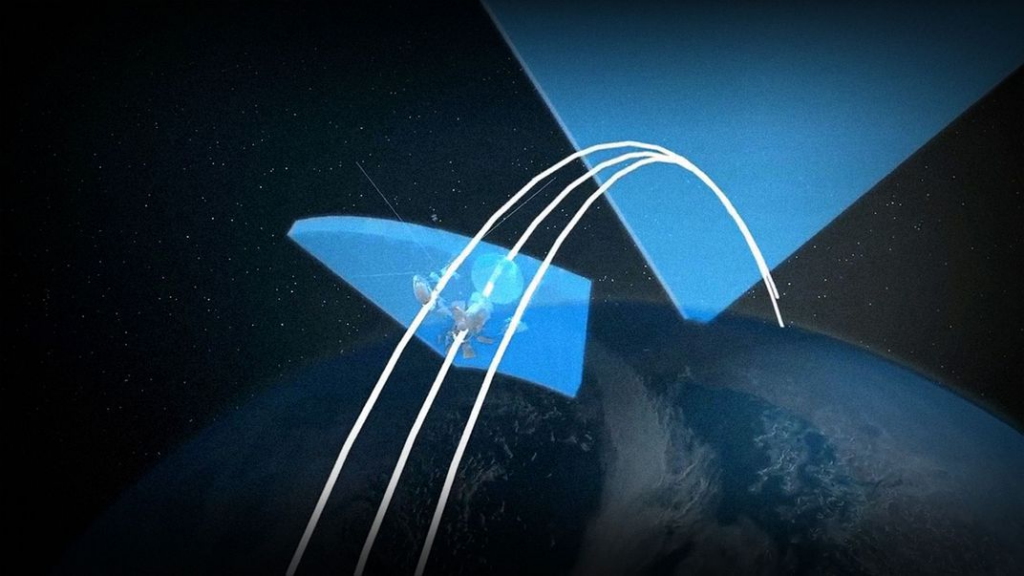
The Space Fence is the newest sensor used by Space Command for tracking satellites and debris. ( 20th Space Surveillance Squadron)
WASHINGTON — The Commerce and Defense departments are targeting December to initiate their joint pilot program to demonstrate how commercial space monitoring data can be used to keep eyes on satellites, dangerous debris, and potential on-orbit crashes, according to a senior Commerce official.
“Later in the year, hopefully in December, we’ll be working with the Joint Task Force-Space Defense Commercial Operations Cell, more commonly known as the JCO, … on an all-commercial pilot,” Richard DalBello, head of the Office of Space Commerce at the National Oceanic and Atmospheric Administration (NOAA), said today. The pilot, he told the CyberSatGov 2022 conference, will be focused on tracking space objects in the geosynchronous belt, some 36,000 kilometers in altitude.
NOAA is a Commerce Department agency, and is responsible for licensing commercial remote sensing operators. DalBello’s office has been designated, as a result of the 2018 White House Space Policy Directive-3, to take over from Space Command the mission of providing space situational awareness data to non-military satellite operators around the world. The goal is to give SPACECOM’s 18th Space Defense Squadron more time to focus on its mission to detect and monitor potentially threatening adversary spacecraft.
Joint Task Force-Space Defense (JTF-SD), headquartered at Schriever SFB in Colorado, is an operational SPACECOM command responsible for protecting and defending US space assets, including coordinating with the Intelligence Community. The JCO involves commercial operators in order to bring their capabilities to bear.
That pilot project will use SPACECOM’s Unified Data Library (UDL) as a data base, DalBello said. The UDL, managed by the JCO, is a DoD data lake created to safely ingest SSA data from numerous sensors, including from commercial and allied providers, and redistribute it to military users.
This is because Commerce is still in the early stages of creating its own cloud-based data storage capability, called the Open Architecture Data Repository (OADR).
NOAA in July put out a request for information (RFI) aimed at surveying the market for cloud providers to house and store commercial SSA data. The deadline for interested vendors to respond was Aug. 18. In August, the agency issued a second RFI seeking to assess commercial company capabilities for providing data processing services, especially “data calibration and validation techniques which might be applied to data products prior to their incorporation into the OADR.” Those responses were due Sept. 16.
“We got all the responses back, and we’re putting all that together. But we can’t move out on the cloud until until we get our ’23 budget,” DalBello said.
The US government, as usual in recent years, has been operating since the end of the fiscal year in September on a continuing resolution — which means no new programs can be launched. “So, we can’t really start that contracting cycle until we actually get our budget,” he said.
The Biden administration proposed $87.7 million total for the Office of Space Commerce in its FY23 budget request, a dramatic increase from the $16 million in FY22.
DalBello’s office was, however, able to use existing funds earlier this year to contract with LeoLabs to provide initial space tracking data, and the intention is to expand that data buying effort in the near future.
Space Force’s Saltzman: New readiness model ‘fundamentally alters’ space combat prep
The new, tripartite Space Force Generation readiness model will create “a more experienced, capable, and threat-focused crew force,” according to an internal memo obtained by Breaking Defense.


























